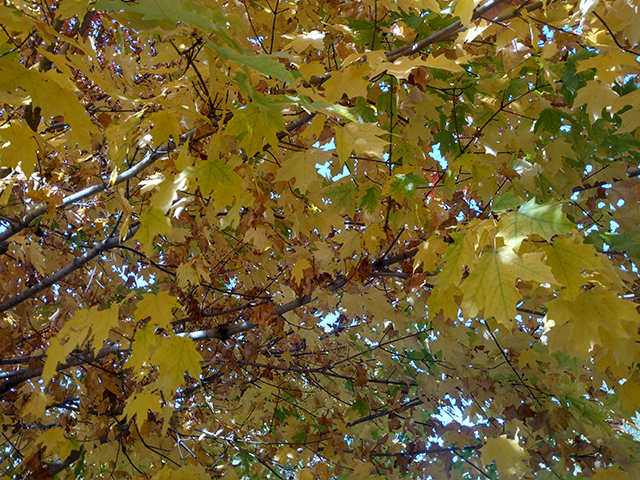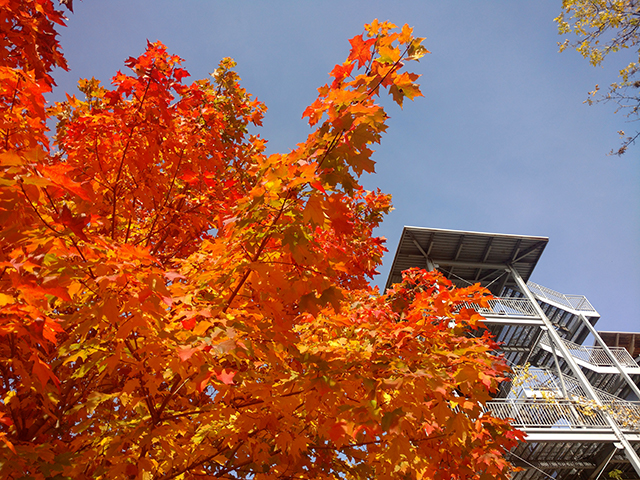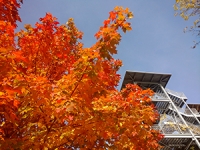When we walk through the woods in the fall, we aren’t walking among sleepy trees. We are walking among trees that are wide awake and working harder than they’ve worked all growing season long. Our trees are storing and compartmentalizing nutrients which they’ll use to stay alive through the winter and to grow leaves in spring. Our trees are forming next year’s leaves and protecting them with little shield-like bud scales. They are getting ready for winter.

All of the work our trees are doing right now result in the beautiful fall colors we love. Yellows are seen after the loss of chlorophyll molecules as the tree shuts down its photosynthetic machinery and reds are actively produced by the tree to protect those chlorophyll molecules that haven’t been dissembled yet. You can read more about the science behind fall colors here. The take-home message, though, is that the yellow colors we see in the fall are a passive color change: the green goes away and only yellows are left. The reds and purples we see in the fall are an active color change: the tree has to invest energy into producing those pigments.
With all of the work our trees have to do to get ready for winter, they prefer an ideal set of weather conditions. The best weather for trees to prepare for winter (and therefore for us humans to see the most beautiful and vibrant fall colors) is a fall with cool, sunny days, cold but not freezing nights, and plenty of (but not too much) rain. Our recent stretch of hot days and droughty conditions don’t fit into those ideal parameters, so fall color will probably not be as special as other years. We can expect to see plenty of yellows (remember this is a passive color change that doesn’t cost the tree anything). Reds and purples, however, might not be as plentiful or as vibrant this year.

Don’t worry, though! There will, of course, be trees that totally blow your socks off. For example, a young sugar maple right next to the Riverside Branch of the Urban Ecology Center looks like a box of Crayola crayons right now: purples, reds, oranges, yellows, and greens all together on one tree. Not all individual trees will get the “we aren’t being as vibrant this year” memo, but on a forest scale, we can expect to see more yellows turning brown and fewer brilliant reds and purples this fall.





